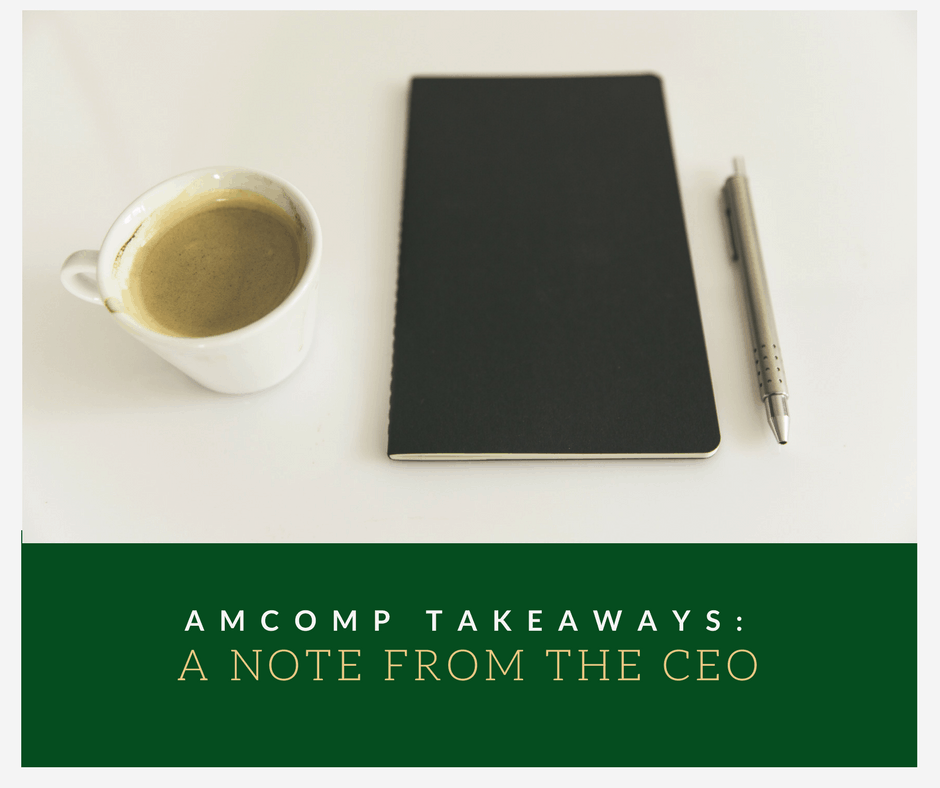
AMCOMP was an amazing event in Las Vegas last week – March 15 and 16th. I had the distinct opportunity to network and share best practices with fellow Workers’ Comp Professionals. It was exciting to hear about the latest news in Workers’ Compensation on a national level. I was also excited to be part of a panel discussing latest trends with respect to fraud and what other states are doing to tackle the complex and costly issue of fraud.
We heard from many great panelists and speakers over a two day period including a former NFL executive as well as discussions around the rating system in the comp industry. Leaders from various states including New York and California discussed their rating systems and overall impact on the cost of insurance and drivers that impact on costs to businesses. We also heard from CEO’s of major carriers and industry leaders on their perspectives on leadership as well as opportunities they have faced in their industry.
With respect to fraud, it was a true privilege to be part of a panel discussion surrounded by other industry leaders in our field discussing fraud trends and best practices. The discussion surrounded what organizations are doing to combat fraud from an investigative and legal perspective.
Here were my TOP TWELVE key takeaways:
- Several types of fraud exist, focus should not be JUST on Claimant Fraud. Other types that are prevalent include employer misclassification and fraud by providers;
- According to NICB, $7.2B is spent annually on Workers’ Comp, over $675M in wasted on fraud is in 1 state alone;
- Pre-Surveillance Investigation is CRITICAL in every investigation; there are key steps that MUST be taken before leaving the office;
- Surveillance tools are vast; vehicles, equipment, technology, personnel; be sure to maximize these
- Technology: Remote Cameras and Drones; Several legal loopholes to avoid – beware!
- Definition of a “successful result” has various meanings depending on outcome sought; use budget wisely;
- Obstacles of Surveillance: Traffic Laws, Heightened Claimant Awareness and more;
- Workers Comp Fraud: Civil and Criminal: Understand the difference and how to achieve both in your state;
- Some states (Texas for example) have very lax processes on combatting Workers’ Comp Fraud;
- Key to successful outcome is showing a material misrepresentation;
- Understand what actions you can and cannot take when a claimant is represented;
- Results from 16 state survey of law firm members of NWCDN (National Workers’ Comp Defense Network) reveals that ONLY 5 states
- Are inclined to find claimant fraud when sufficient evidence is presented;
- Are aggressive in pursuing criminal prosecution of claimants for Workers’ Comp fraud;
- Are convicted claimants sentenced to a period of incarceration
As the panel concluded, an interesting dialogue ensued from the members including an overall frustration with the “system” and lack of proper enforcement of fraud. As the questions unfolded it became clear that the issue is not isolated to claimants only; that employer misclassification as well as failure to properly report payroll, including “cash payments” has a significant impact on the overall fraud. In addition, it was agreed that leadership within carriers must be consistent with enforcing fraud. If there is not a consistent process over time, it could potentially weaken the position of all stakeholders. Overall, the most common denominator was that in order for this process to be successful, legislation must support the initiatives to reduce fraud and overall impact.
I look forward to future AMCOMP meetings to continue to learn and grow in the field of Workers’ Compensation Fraud.
AMCOMP is the American Society for Workers’ Compensation Professionals, an organization dedicated to professionalism and educational excellence in Workers’ Compensation.
Mario S. Pecoraro, CEO
Alliance Risk Group Inc.
Check out this video of Mario at AMCOMP!
